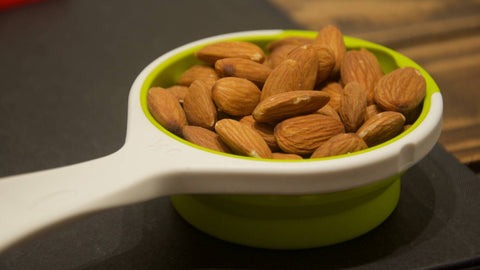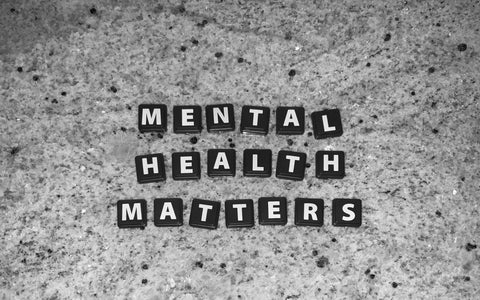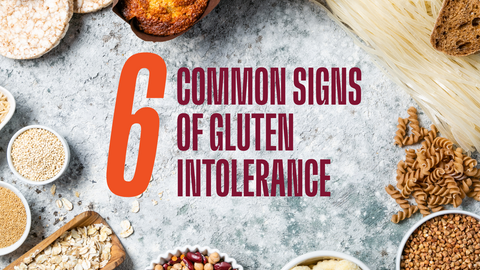Diets can be really complicated. You find yourself counting calories, measuring and weighing portions, and looking up recipes with the exact food pyramid ratios that you need.
Turns out, when you asked your maths teacher when you would ever need equations, the answer was in your pantry the whole time!
But there is one diet - and I hesitate to use the word - that is easy to implement and doesn’t require a calculator. It’s the portion control diet!
Here are 7 easy tips for an achievable portion control diet that won’t leave you miserable or stress you out.
What is a Portion Control Diet?
A portion control diet doesn’t focus on changing what you eat, it focuses on changing how much you eat. By limiting the size of your portions, you are naturally also limiting how much you eat. Portion control diets work because they trick your brain into thinking it is eating the same amount as usual, when it is actually eating less.
Why Choose a Portion Control Diet
Most diets require a lot of discipline and sacrifice, but this is achieved through calorie counting and eliminating foods that you enjoy. While these diets are well suited to more urgent or dramatic weight loss goals, many people can benefit simply from eating the same, but less.
This is especially true if you have a reasonably healthy diet, but you’ve put on some excess weight.
If you find your summer clothes are a little bit tighter than you remember from the year before, then reducing portion sizes for weight loss is the strategy for you!
7 Easy Tips for an Achievable Portion Control Diet
Without further adieu, here is our achievable food portion guide.

1. Use Smaller Plates
This is the first tip you’ll often hear for a portion control diet, and for good reason. It’s shocking how much our perception of eating changes how much we actually eat.
Imagine you’re served a plate of meat and vegetables, but then someone takes the meat away. Your brain will think it is eating half a meal and will make you feel unsatisfied.
Now picture someone doubling the portion of vegetables to cover the whole plate…
Guess what? You’ll still feel unsatisfied, because to your brain the meal is incomplete. The good news is, you can use that to your advantage.
Let’s rewind our example and imagine that you get served a fully balanced meal, but on a smaller plate. Even though this meal is smaller, your brain will look at it as more filling than the large plate of vegetables.
That’s why using smaller plates is so effective in a portion control diet - you still get to eat properly balanced meals, and your brain is none the wiser.
2. Drink a Glass of Water Before Every Meal
Drinking a glass of water before every meal is a great idea for two reasons.
First, it keeps you hydrated. Drinking water is good for you, and if you drink three glasses with all three meals, you are well on your way to drinking the recommended daily amount.
Second, while you may think of fluids and food as separate, at first they end up in the same place. If you drink a large cup of water before a meal, it will partially fill your stomach, so when you eat a smaller portion you’ll trick your body into thinking it has had a larger meal.
3. Slow Down!
Have you ever had a night out where you drank really quickly and felt fine, just for it to hit you like a truck an hour later?
Well eating and feeling full work in a similar way. If you eat a meal quickly, there can be a delay between your stomach being full, and your brain telling you that you feel full. Unfortunately, if you eat quickly that means there is a window of time where you might keep eating even though you are full.
When moving to smaller portions, if you eat fast you might assume that you’re still feeling hungry because of the portion size. By slowing down, you give your body a chance to start digesting what you’re eating, and you’ll often find the smaller portion was enough - you just didn’t realise.
4. The 20 Minute Rule
Leading on from slowing down while eating, you may have heard of the 20 minute rule. Just as it can take a while to feel full while eating, it can also take a while for the full effects of a meal to manifest after you finish it.
If you’re eyeing off seconds, or maybe some dessert, wait for 20 minutes and see if you still feel like it. Odds are, that piece of cake that looks delicious now will make you feel sick once the full effect of your meal kicks in.
5. Avoid Eating from Packets
Remember how you can trick your brain into thinking it is eating more? Well that trick can also work in reverse. Whenever you eat pre-packaged goods, bear in mind that the size of the packet isn’t necessarily the same as the recommended serving size.
This is especially dangerous with snacks, where your brain will feel compelled to finish a packet of lollies or chips, even if you aren’t that hungry.
Instead, pour the amount you actually feel like into a bowl, and put the rest of the packet away. This way, you can eat the amount you originally wanted without making yourself feel sick or guilty.
6. Ask for Less
Eating meals at restaurants and takeaway venues poses a similar threat to your portion control diet as package sizes.
The goal of restaurants and takeaway venues is to give you a positive experience so you’ll come back. So put yourself in their shoes. Would you prefer to know that your customers have more food than they need, or less?
Everyone eats different portion sizes. To play it safe owners will generally opt for bigger meals to account for all the possibilities.
But remember, your brain will naturally push you to want to finish everything on your plate. So if your local Italian restaurant piles on the pasta, you may pile on the pounds.
Instead, ask for a smaller meal upfront. This way you’re avoiding the later temptation before it even starts. Plus, there is a (small) chance that you could negotiate for your meal to be cheaper if you’re getting less of it.
7. Portion your Leftovers
If you’re following the 20 minute rule, you might be finding yourself with a lot more leftovers than normal. Leftovers are one of the biggest threats to using portion sizes for weight loss. It’s a good idea to try meal planning to reduce the amount of leftovers you’ll have in the future.
Most people will wrap their leftovers in bulk and throw them in the fridge. Then, over the next few days, they’ll pick at them, or they’ll reheat the entire lot and eat them in one go.
The problem is, leftovers are a lot like that overly chatty register operator at the supermarket who asks personal questions instead of small talk - they don’t have boundaries.
There are no rules as to how much or little you should eat. By storing leftovers in portion sizes after you finish dinner, you can guarantee that when you reheat them, you are only eating the amount you need. Likewise, you are much less likely to pick at neatly packaged containers than a large foil covered tray.
Have You Considered Ready-Made Meals?
One of the best ways to keep a portion control diet tasty, easy and effective is by eating ready-made meals.
Ready-made meals are already pre-portioned, so you won’t be tempted to add a little more to your plate or to go back for seconds.
For an added benefit, if you get your ready-made meals through Activate Foods, you know that they are healthy, taste home made, and come in a variety of nutritional and dietary restriction versions.
So if you’d like to start your portion control diet in the easiest and tastiest way possible, register at Activate Foods today.


